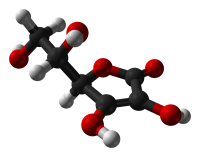Why identical copying is unnecessary for foodsynthesis
With the term "food structure irrelevancy gap" here on this wiki we will refer to a size range in food in that human bodies do not care about the structure of the food.
The three size levels of food
Atomic scale
At the atomic scale a human body very much cares which chemical elements are included in the food and in which way atoms of these chemical elements are bond to one another. This is what makes food healthy tasty colorful and durable.
Micro scale
At the microscale the structure of food is pretty much irrelevant to a human body. These structures get destroyed early on in the digestion process or even earlier in the process of cooking. So there is no reason that motivates the replicating of inter-cellular structures in food meant for ingestion.
Beside that diamondoid nanosystems do not lend themselves well for production of such a complex mess.
Macro scale
At the macroscale again we very much care for the makeup of our food. (TODO: add image of apple)

